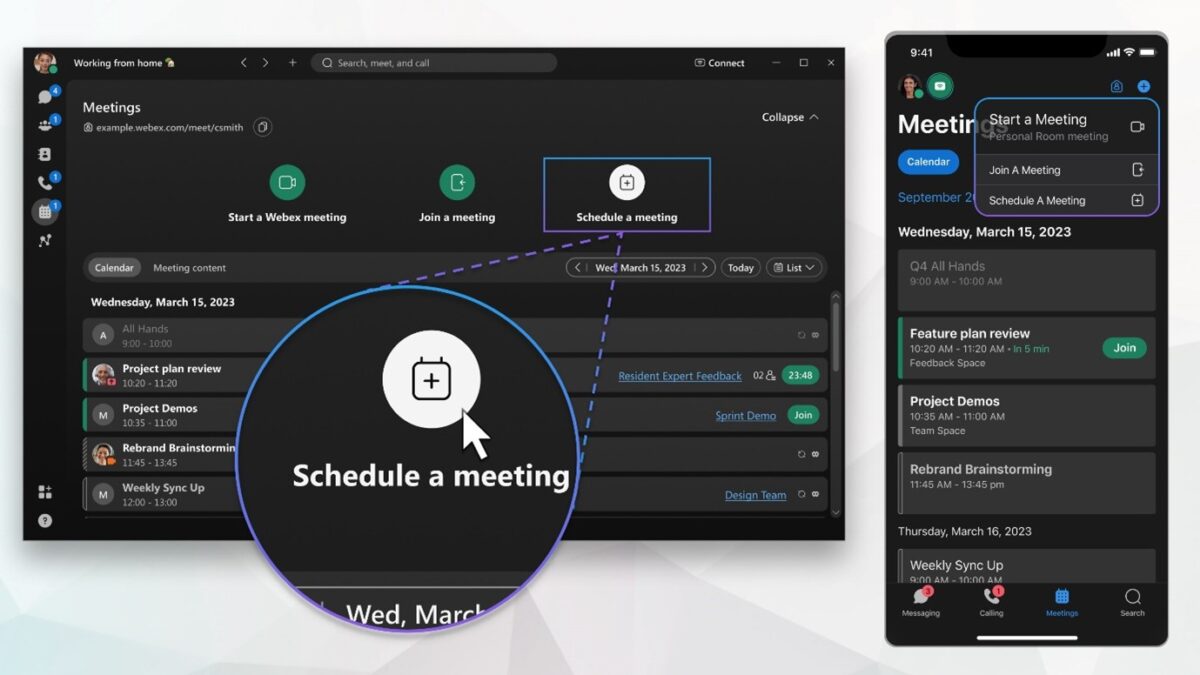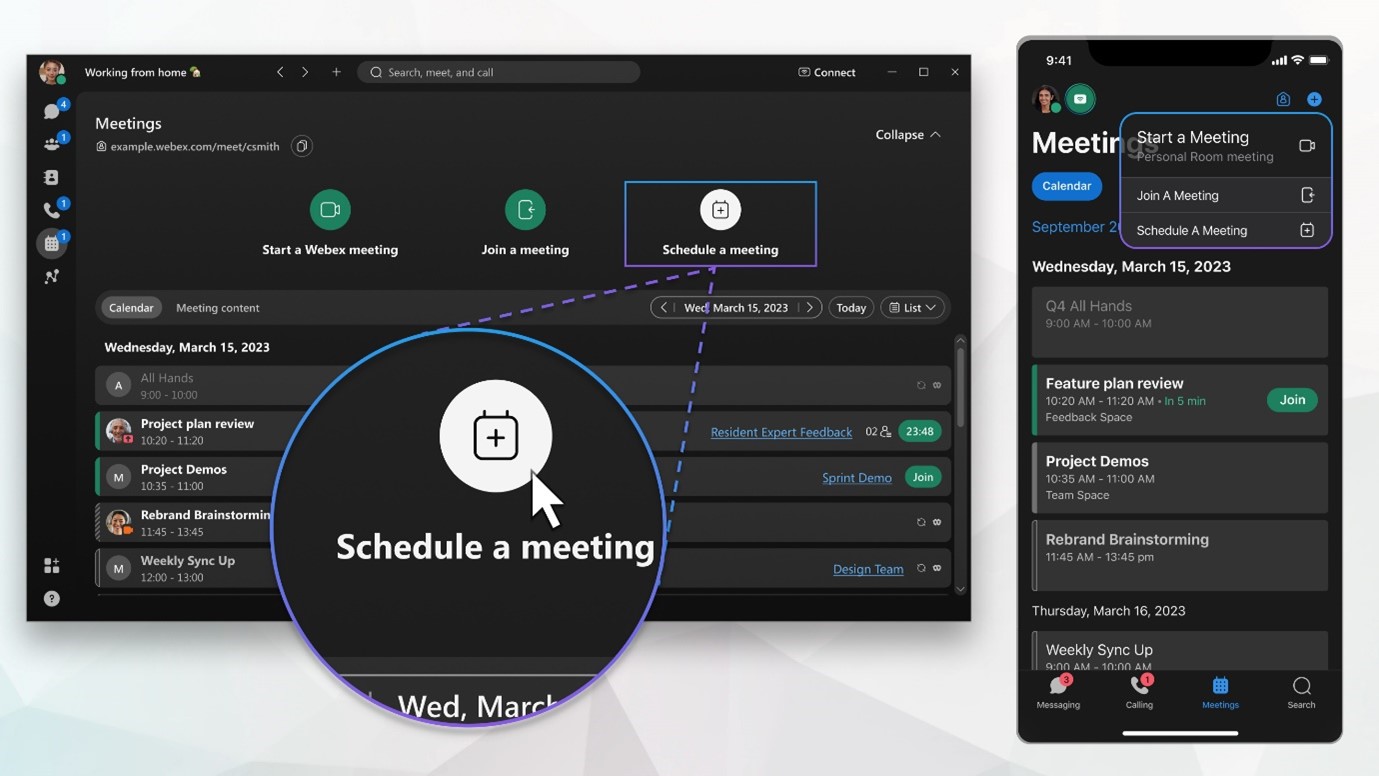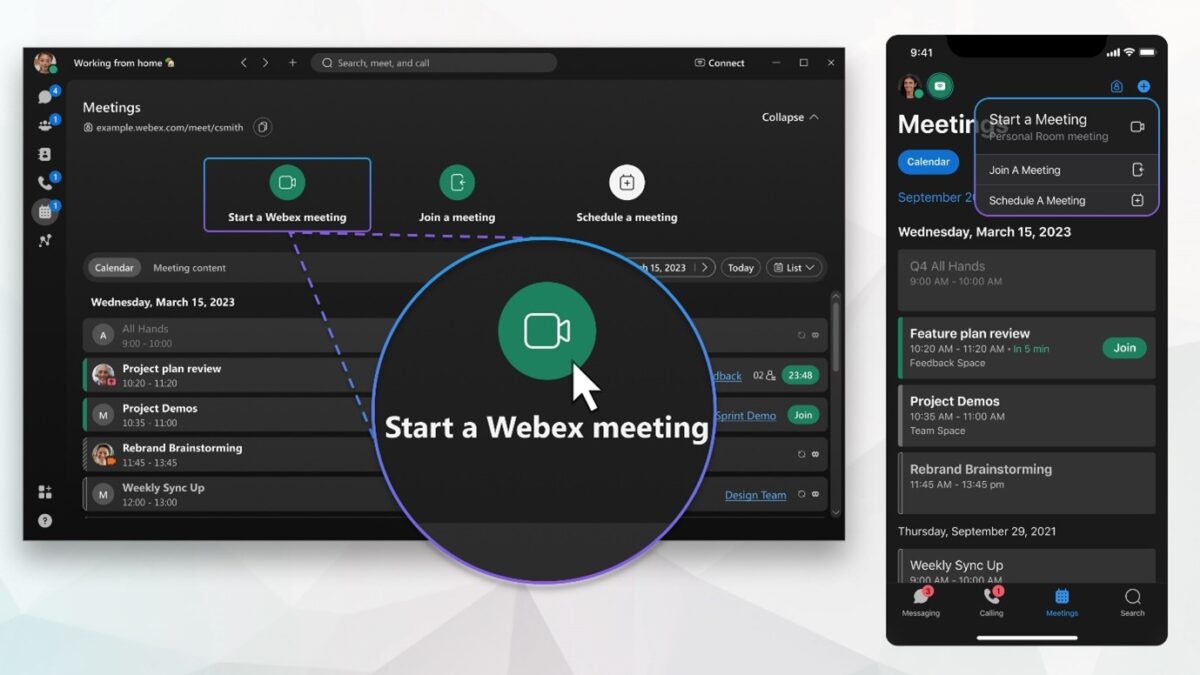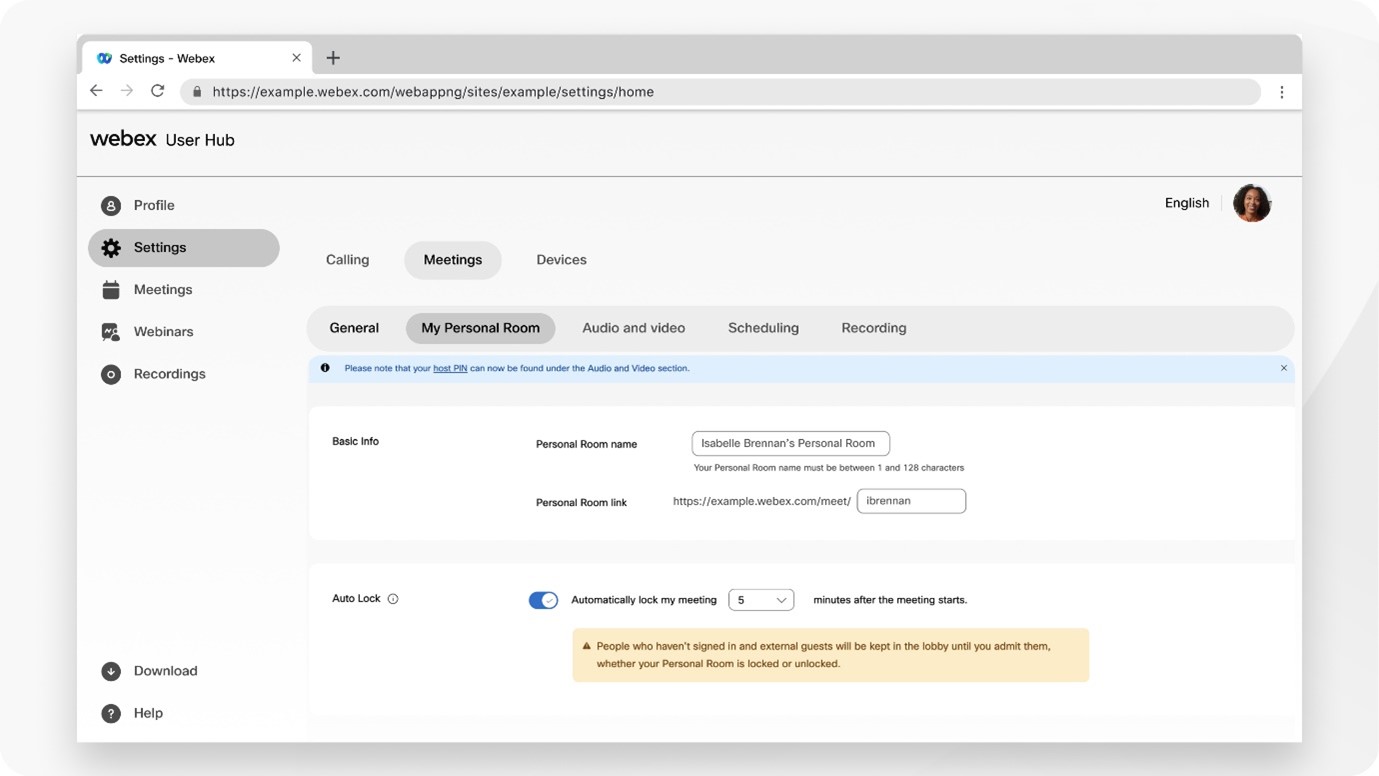What are the different types of the WebEx meetings
There are three types of WebEx meetings:
- Personal Room meeting
- Standard Scheduled meeting
- Personal Conference meeting
Meetings offers a feature-rich collaboration experience. But when should you use a Webex Personal Room meeting, a standard scheduled meeting, or a Personal Conference meeting? Use this knowledge article to decide which type of meeting works best for you.
- Personal Room Meeting
- Personal Room meetings are best for impromptu meetings, and back-to-back meetings in which the meeting host wants to remain in one meeting room for several meetings and have attendees join at different times.
- You can start a Personal Room meeting from your Webex site. You can schedule single occurrence and recurring Personal Room meetings in Outlook using the Webex Meetings Desktop App.
- Attendees can’t join before the meeting starts but, during a meeting, you can lock your Personal Room. People wait in a virtual lobby until you admit them. You can also set your Personal Room to lock automatically zero to 20 minutes after the meeting starts.
- You can add cohosts or alternate hosts to let others host your Personal Room meetings without you.
- Your cohosts or alternate hosts can schedule personal meetings on your behalf.
- All Personal Room meetings use your Personal Room URL as the meeting link that users click to join. Your Personal Room URL is in the format company.webex.com/meet/ username.
- All meetings use your Personal Room video address as the video address that users dial if they join by video system.
- Standard Scheduled meeting
- You can schedule a standard meeting from your Cisco Webex site, in Microsoft Outlook using the Cisco Webex Meetings Desktop App, or from your mobile device.
- You can schedule single occurrence or recurring meetings.
- You can choose to require registration when you schedule the meeting.
- You can choose to allow attendees to join the meeting up to 15 minutes before start time when you schedule the meeting.
- You can add alternate hosts and let anyone with a host account on the Webex site host the meeting.
- Someone with a host account on the Webex site can schedule a meeting on your behalf. You are the only host who can start the meeting.
- Each meeting has a unique meeting URL that users click to join.
- Each meeting has a unique video address that users dial if they join by video system.
- Personal Conference meeting
- A Personal Conference meeting is an audio-only meeting that’s like a conference call. This meeting type can be escalated to a standard scheduled meeting, if needed. A meeting URL is generated when a Personal Conference meeting is scheduled.
- You can schedule single occurrence meetings from your Webex site and in Outlook using the Webex Meetings Desktop App. You can schedule recurring meetings using the Webex Meetings Desktop App.
- You can add alternate hosts to let others host your Personal Conference Meetings without you.
- We don’t recommend that you allow attendees to join before the meeting starts. Doing so could allow unwanted participants to potentially cause fraudulent telephony charges before the host joining.
- If you escalate the meeting to a standard Webex meeting, each meeting has a unique meeting URL that users click to join.
- The maximum number of participants is 500 audio-only participants. If escalated to an online meeting, the first 25 participants can join.
See the table and following descriptions for more details.





 , and then enter your meeting info:
, and then enter your meeting info:










 , then select Polling.
, then select Polling.

 > Meeting options
> Meeting options
 on any of the four corners or sides to make the window larger or smaller.
on any of the four corners or sides to make the window larger or smaller. to pause sharing your screen or application.
to pause sharing your screen or application. to resume sharing your screen or application.
to resume sharing your screen or application. indicator shows your network connection and CPU usage, the
indicator shows your network connection and CPU usage, the  indicator appears when the meeting is being recorded, and the indicator appears when the meeting is locked.
Step6: When you want to stop
indicator appears when the meeting is being recorded, and the indicator appears when the meeting is locked.
Step6: When you want to stop  sharing, click Stop at the top of the screen.
sharing, click Stop at the top of the screen.